Accepted Scientific Name: Gymnocalycium reductum var. leeanum (Hook.) Papsch
Gymnocalycium 13(3): 371. 2000 [August 2000]
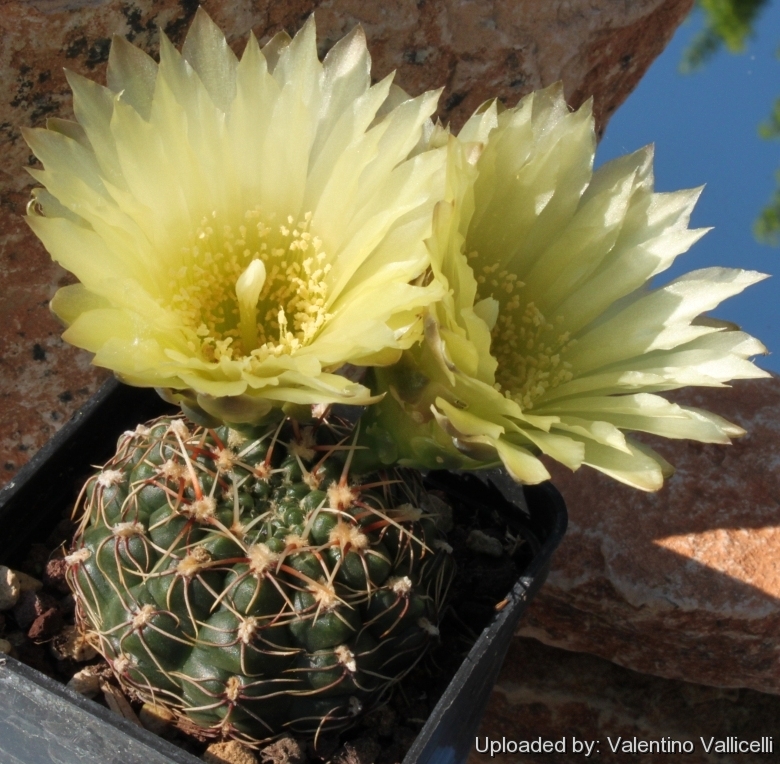
Echinocactus leeanus (Gymnocalycium reductum var. leeanum) Photo by: Valentino Vallicelli
It is a small species covered with short and flattened spines and yellow flowers, it has been named after J. Lee.
Origin and Habitat: This species is endemic to Argentina, where it occurs in Buenos Aires and La Pampa. Also reported from Uruguay (Maldonado, Durazno, Lavalleja, Canelones).
Altitude range: (160-)500 metres above sea level.
Habitat and Ecology: This species can be found growing in grasslands on rocky places in Sierra de la Ventana and nearby hills in the south of Buenos Aires. It also grows in organic material among rocks in Sierra de Tandil. Plants often grow in the shelter of bushes. The plant grows on hills in an area where there is increasing human activity and animal grazing.
Synonyms:
See all synonyms of Gymnocalycium reductum
back
Accepted name in llifle Database:Gymnocalycium reductum (Link) Pfeiff. ex MittlerTaschenb. Cactuslieb. 2: 124 (1844); et: Pfeiff. & Otto, Abbild. & Beschr. Bluh. Cact. ii. sub t. 1 (1845), in adnot.Synonymy: 3
Accepted name in llifle Database:Gymnocalycium reductum var. leeanum (Hook.) PapschGymnocalycium 13(3): 371. 2000 [August 2000]Synonymy: 5
back
Common Names include:
ENGLISH: Yellow Chin-cactus
Description: The Yellow chin-cactus, Gymnocalycium reductum var. leeanumSN|14835]]SN|15726]] (syn: Gymnocalycium leeanumSN|15728]]SN|15728]]), is a small cactus that usually grows in clumps. This species flowers readily and profusely. Moreover, the flowers are large (5-6 cm in diameter), pale yellow and remarkably long-lasting, a single bloom often surviving for ten days or more. Gymnocalycium leeanumSN|15728]]SN|15728]] is a particularly good species to have, it flowers are among the first cactus flowers to appear each year. Buds are seen in February usually and the first blooms may open at the beginning of March, rivalling those of Gymnocalycium bruchiiSN|15726]]SN|14835]] and of Toumeya schmiedickiana for their earliness.
Stems: Depressed-globular to globular, rather glaucous dark green colour blue-green, up to 8 cm in diameter.
Ribs: 15, low, rather indefinite, hemispherical but usually more or less hexahedral at base, no arranged in distinct lines or series so as to form ridges with their corresponding furrows, but placed with a good deal of irregularity, becoming, below especially, confluent and obsolete, at the top small and very numerous.
Aareoles: Oval, downy, or rather woolly.
Central spine: None or sometimes one straight, erect and rigid.
Radial spines: Approximately 11, flat spreading horizontally and somewhat bent against the stem (especially on the older tubercles), most of these are nearly equal in size and up to 1.2 cm long.
Flowers:One or two (or more), large, near the apex or depressed portion above, 5-6 cm wide and long. Tube short covered with green roundish or oblong obtuse scales, the upper ones larger, with pale edges and tips and gradually passing into the tepals. Outer perianth segments green, tinged with purple. Inner perianth-segments yellow, yellowish-white, or yellowish-green.
Blooming season: Flowers appear recurrently from early spring to autumn.
Subspecies, varieties, forms and cultivars of plants belonging to the Gymnocalycium reductum group
Bibliography: Major references and further lectures
1) Kiesling, R. 2013. Gymnocalycium reductum. The IUCN Red List of Threatened Species 2013: e.T152243A613990. . Downloaded on 31 March 2016
2) Charles, G. 2009. “Gymnocalycium in Habitat and Culture.” Graham Charles, Stamford.
3) Metzing, D., M. Meregalli, and R. “Kiesling. An annotated checklist ofthe genus Gymnocalycium Pfeifferex Mittler (Cactaceae).” Allionia 33:181-228.1995
4) Edward Anderson “The Cactus family” Timber Press, Incorporated, 2001
5) David R Hunt; Nigel P Taylor; Graham Charles; International Cactaceae Systematics Group. "The New Cactus Lexicon" dh books, 2006
6) Curt Backeberg “Die Cactaceae: Handbuch der Kakteenkunde” Gustav Fischer Verlag, Stuttgart New York 1982–1985
7) N. L. Britton, J. N. Rose “The Cactaceae. Descriptions and Illustrations of Plants of the Cactus Family.” Volume 4, The Carnegie Institution of Washington, Washington 1923
8) Gymnocalycium leeanum in: The National Cactus and Succulent Journal: The Official Journal of the National Cactus & Succulent Society, National Cactus and Succulent Society, 1972
9) Swales, G.J (1975) “Studies in the genus Gymnocalycium”, Durham theses, Durham University. Available at Durham E-Theses Online: http://etheses.dur.ac.uk/8889/
10) Curt Backeberg, Frederik Marcus Knuth "Kaktus-ABC. En haandbog for fagfolk og amatører." Kopenhagen 1936.
 Echinocactus leeanus (Gymnocalycium reductum var. leeanum) Photo by: Cactus Art
Echinocactus leeanus (Gymnocalycium reductum var. leeanum) Photo by: Cactus Art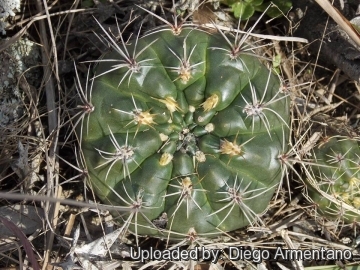 Echinocactus leeanus (Gymnocalycium reductum var. leeanum) Photo by: Diego Armentano
Echinocactus leeanus (Gymnocalycium reductum var. leeanum) Photo by: Diego Armentano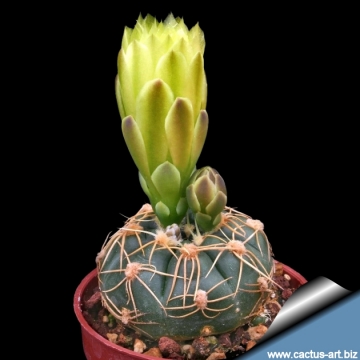 Echinocactus leeanus (Gymnocalycium reductum var. leeanum) Photo by: Cactus Art
Echinocactus leeanus (Gymnocalycium reductum var. leeanum) Photo by: Cactus Art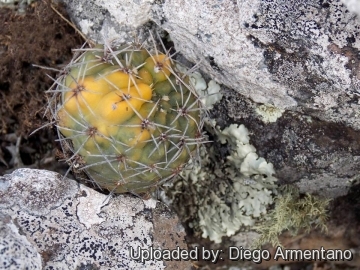 Echinocactus leeanus (Gymnocalycium reductum var. leeanum) Photo by: Diego Armentano
Echinocactus leeanus (Gymnocalycium reductum var. leeanum) Photo by: Diego Armentano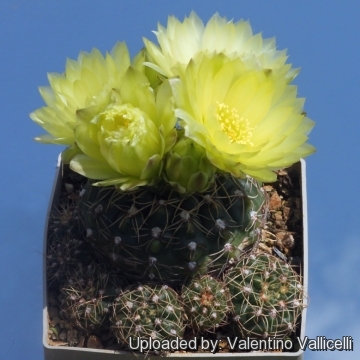 Echinocactus leeanus (Gymnocalycium reductum var. leeanum) Photo by: Valentino Vallicelli
Echinocactus leeanus (Gymnocalycium reductum var. leeanum) Photo by: Valentino Vallicelli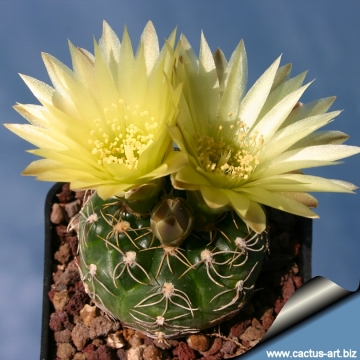 Echinocactus leeanus (Gymnocalycium reductum var. leeanum) Photo by: Cactus Art
Echinocactus leeanus (Gymnocalycium reductum var. leeanum) Photo by: Cactus Art Echinocactus leeanus (Gymnocalycium reductum var. leeanum) Photo by: Cactus Art
Echinocactus leeanus (Gymnocalycium reductum var. leeanum) Photo by: Cactus Art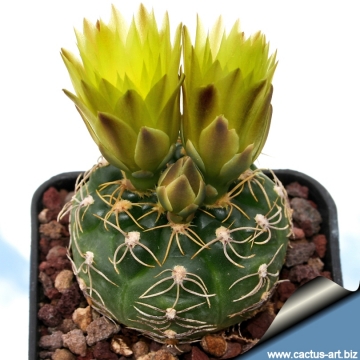 Echinocactus leeanus (Gymnocalycium reductum var. leeanum) Photo by: Cactus Art
Echinocactus leeanus (Gymnocalycium reductum var. leeanum) Photo by: Cactus ArtCultivation and Propagation: It is a summer grower species that offers no cultivation difficulties. Water regularly in summer (but do not overwater ). Keep rather dry in winter. Feed with a high potassium fertilizer in summer. Hardy as low as -5° C (or less) if kept dry. Sun Exposure: Light shade.
Propagation:: Direct sow after last frost or by planting offsets.


















